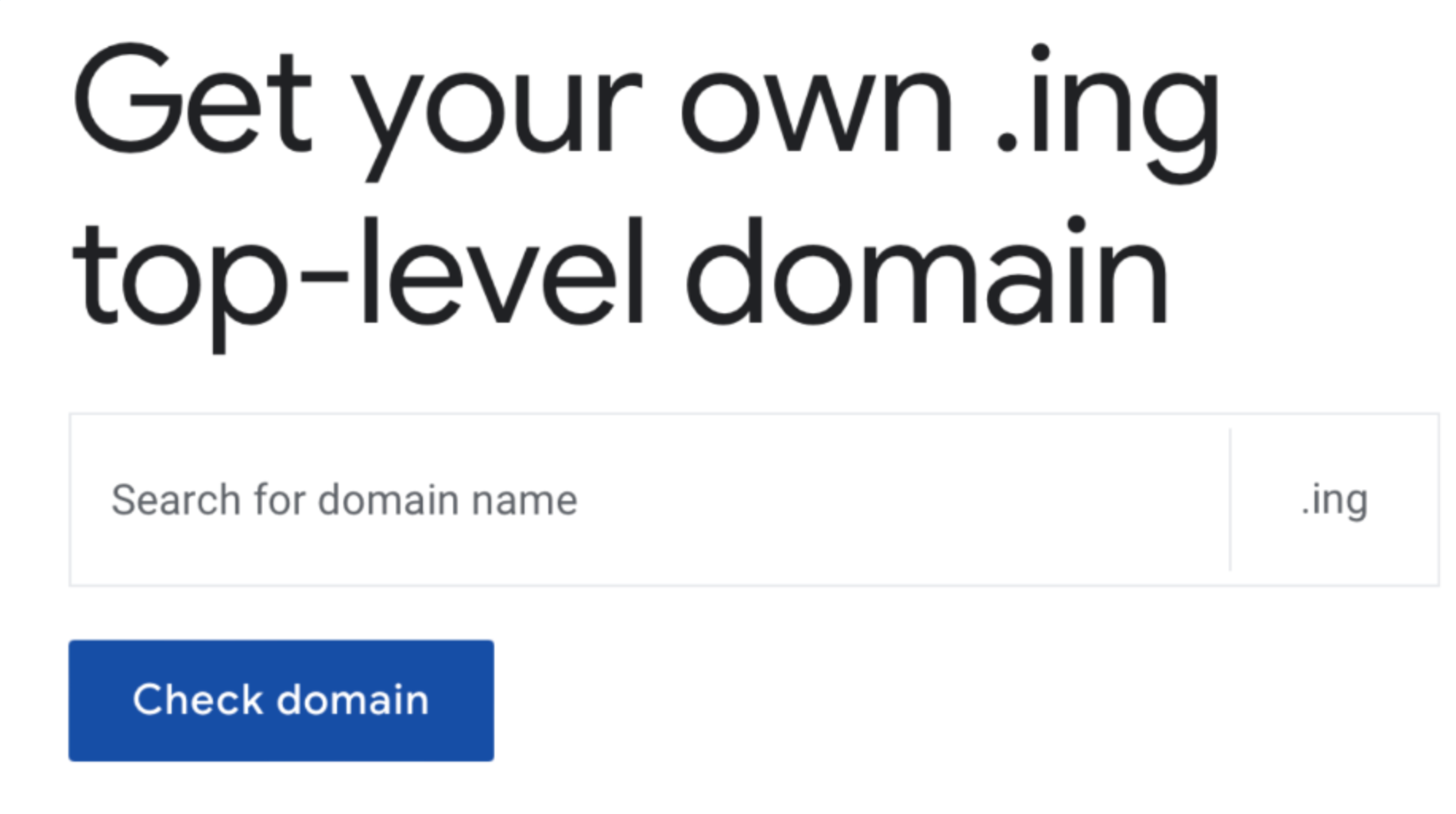Google Registry launches new top-level domain: .ing
Google Registry yesterday announced the launch of a new top-level domain (TLD): .ing. This new domain extension is open to anyone and allows businesses and individuals to create single-word websites that reflect their passions, interests, and activities.

Google Registry yesterday announced the launch of a new top-level domain (TLD): .ing. This new domain extension is open to anyone and allows businesses and individuals to create single-word websites that reflect their passions, interests, and activities.
Some of the early adopters of the .ing TLD include Canva, Adobe Acrobat, Going, Giving Tuesday, Mavericks Surf Awards, Adapt, Mmm.page, The Inkbunny Studios, Nom Bot Dumplings, and the Swiss Association of Consulting Engineering Companies.
"We're excited to see how people use .ing to create unique and memorable online experiences," said Christina Yeh, Product Marketing Manager at Google Registry. "With .ing, you can build a website for anything you're interested in, whether it's your work, your hobbies, or your side hustle."
To register a .ing domain, advertisers need to visit get.ing during the Early Access Period (EAP), which ends on December 5, 2023. During the EAP, there is an additional one-time fee, which decreases according to a daily schedule. After December 5, .ing domains will be publicly available at a base annual price through your registrar of choice.
Benefits of using the .ing TLD
- Memorable: Single-word domains are easy to remember and type, making them ideal for businesses and individuals who want to create a strong online presence.
- Relevant: The .ing TLD is relevant to a wide range of industries and interests, making it a good choice for businesses and individuals who want to target a specific audience.
- Unique: The .ing TLD is still relatively new, so there are many opportunities to register unique and meaningful domain names.
How to get a .ing domain
- Visit get.ing during the Early Access Period (EAP), which ends on December 5, 2023.
- Search for and select the domain name you want.
- Create an account with a registrar that offers .ing domain names.
- Pay the applicable fees and complete the registration process.

